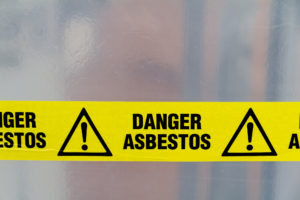At Truth Legal we have a specialist team of asbestos disease compensation solicitors. Asbestos related disease compensation needs to be dealt with by specialists, as most High Street lawyers (who are very good at many things) will not have enough experience of dealing with these complex cases.
Most people know very little about asbestos illness, unless or until it affects them in some way. Even those that worked with asbestos, (and this was usually many years ago) often walk around with symptoms that suggest they may well be suffering from one of the asbestos illnesses, whilst blissfully unware as to the causes of their breathing or other chest or respiratory difficulties.
We get asked a lot of questions about these awful individual illnesses which come under the heading of ‘asbestos related diseases.’ We tend to get asked the same questions frequently. Therefore, we thought it might be helpful if we outlined some of the more often asked questions here, together with our answers to them.
- What is Asbestosis?
The word ‘Asbestosis’ is commonly, wrongly, used by many as a general term for asbestos related disease. There is indeed a condition called asbestosis (scarring of the lungs caused by heavy exposure to asbestos dust or fibres) but it is a standalone disease and not a group name for all asbestos diseases.
The other main asbestos diseases are: –
- Mesothelioma – a tumour which grows in the external lining of the lungs (pleura) or in the lining of the abdomen (peritoneum).
- Asbestos Related Lung Cancer – lung cancer that has been caused by exposure to asbestos. Most commonly people think of lung cancer as having been primarily caused by smoking, which is of course not always the case. Many who get lung cancer and were exposed to asbestos, were smokers. They may still be able to claim compensation for asbestos exposure, notwithstanding.
- Diffuse Pleural Thickening – Often just referred to as pleural thickening, this is caused by scarring of the outside lining of the lungs. It causes breathing difficulties that vary in their severity. Pleural thickening can be caused by lower levels of exposure to asbestos than is often the case with the other more serious asbestos diseases.
- I have Pleural Plaques – Can I make a claim for compensation?
There is indeed a condition called pleural plaques also caused by exposure to asbestos. This is a form of scarring of the thin membrane that covers the lung (also known as the pleura). Pleural plaques are benign (non-cancerous) and usually asymptomatic, meaning that they do not cause pain or other difficulties. Often sufferers are only diagnosed by accident when they undergo a routine check-up or when they are x-rayed for an unrelated matter.
It was possible to claim compensation in England and Wales for pleural plaques until a House of Lords decision in 2007. This decided that asymptomatic pleural plaques sufferers did not in fact have a case that was actionable. In a nutshell, their condition was not one that should attract any compensation.
As a result of this decision the government introduced a scheme that enabled those who had started to make a claim for pleural plaques prior to October 2007 had until 1st August 2011 to make instead a claim for a one-off payment of £5000. After that date no more claims were entertained.
For those exposed to asbestos in Scotland and Northern Ireland it is still possible to bring claims for pleural plaques compensation. The legal system in both those countries is different to that in England and Wales.
If someone has pleural plaques it does not mean that they are likely to develop one of the other illnesses. However, the fact that pleural plaques has been diagnosed, indicates that there is asbestos present in the pleura, which could later give rise to another asbestos disease, although that is not the norm.
- Asbestos has been banned hasn’t it? So why are people still being diagnosed with Asbestos diseases?
This is because of something called the ‘latency period.’
Asbestos was finally banned in its entirety in 1999 when the use and importation of chrysotile (white asbestos) became illegal. However, crocidolite (blue asbestos) and amosite (brown asbestos) had been banned in 1985. The latter two forms were the deadlier types of asbestos.
So, it does seem strange that people who worked with asbestos and thus gained exposure to it in the 60s, 70s and 80s are still, only now, being diagnosed with asbestos related illnesses.
The reason is down to the latency period which is time that passes between being exposed to asbestos and having symptoms. The latency period for asbestos disease is at least 10 years but more usually over 20 and can be as much as 50 years.
Eventually fresh diagnoses of asbestos disease in the major western countries where asbestos has been banned for some time, should surely die out, but at the moment there seems to be no slowing down on the immediate horizon. An HSE Report in 2009 predicted that deaths from mesothelioma amongst males should have reached a peak in 2016. That did not prove to be the case.
- So, if I was exposed to asbestos back in 60s or 70s, won’t I be too late to claim if I am only just being diagnosed?
No, just because the exposure was so long ago, that will not necessarily be the case. By ‘being too late’ you are referring to what lawyers’ call being ‘time barred.’ Lawyers also talk about the ‘limitation period.’ This is the length of time between an event happening that was someone else’s fault (here the employer who caused or permitted you to be exposed to asbestos) to you starting your claim. This period in most personal injury, industrial disease and clinical negligence is three years. So, in the cases of a car accident that was caused by another driver, the limitation period in which to make a claim arising out of that accident is 3 years from the date of the accident.
The limitation period is the same length in asbestos disease cases. However, the starting point is not usually the date of exposure to asbestos – in any event would you be likely to know that, other than that it was likely to have occurred within say a period between 1970 and 1979 when you worked at a particular workplace? There may have been a number of periods of exposure if you worked at multiple workplaces where you were exposed to asbestos. No, the starting point for working out the 3-year period is normally the date that you were diagnosed with the asbestos related disease (we say ‘normally’ with caution because this can be a complex area). Due to the latency period being so long, the diagnosis is likely to come many years after you were last exposed to asbestos.
- What if I develop asbestos disease but die before I can make a claim. Can my loved ones start a claim after my death?
Let’s take one step back and assume that you had started a claim, but died before it had been concluded. In that case the executors or administrators of your estate can take this up on behalf of the beneficiaries of your will (or next of kin if you didn’t leave a will – usually they will be one and the same anyway).
Mesothelioma in particular is an extremely aggressive illness and from diagnosis to death can be a cruelly short period of time for the family. It is no wonder that many who could have claimed after being diagnosed, simply did not have the time to do so. In such cases, the executors/administrators can initiate proceedings within 3 years of your passing away. Equally if the deceased had not been diagnosed of asbestos disease prior to death, but on post mortem it was discovered that asbestos disease did cause the death, then the executors/administrators can start a claim. This can also be a complex area for a variety of reasons. Relatives of someone who they know died of or believe died of, an asbestos related disease, should contact us as soon as possible after their loved ones passing.
We have outlined 5 questions about asbestos disease to which we hope we have provided some answers. There are many that we are asked on a frequent basis. It is no surprise that we are. Asbestos disease compensation is one of the areas of law that is not only a mystery to the general public. It is also a mystery to many solicitors. That is why, if you have been diagnosed with an asbestos illness or if you think you may have been exposed to asbestos many years ago and are now worried that you might have an asbestos related disease, you should contact an asbestos disease compensation specialist like the expert team at Truth Legal. Call us on 01423 788538 or email help@truthlegal.com
Further Reading
From one of the UK’s most read legal blogs.











